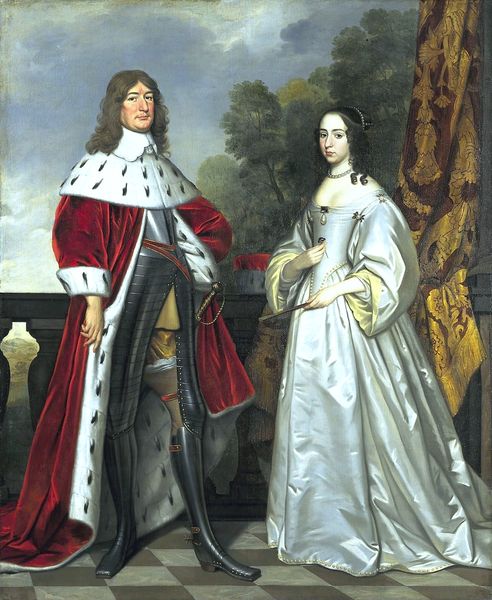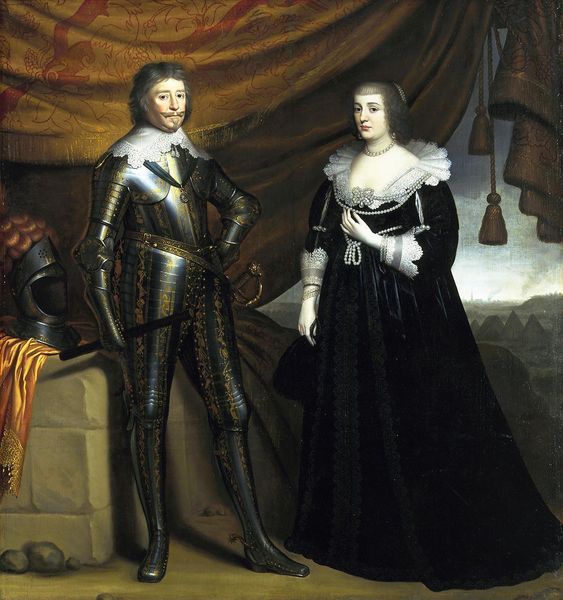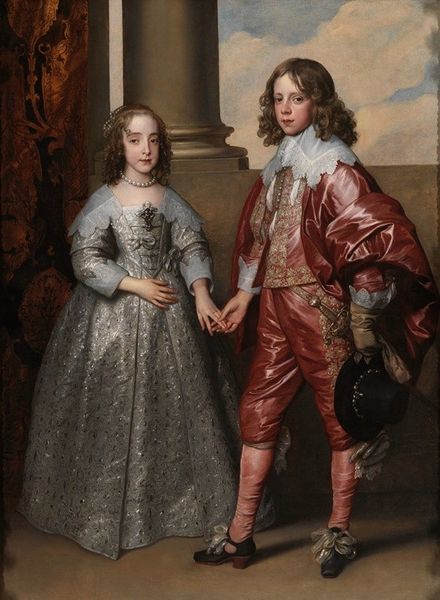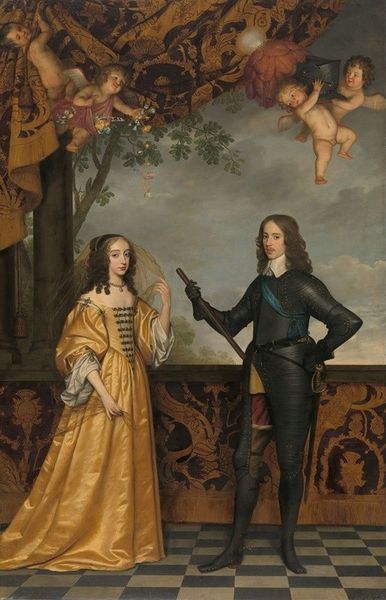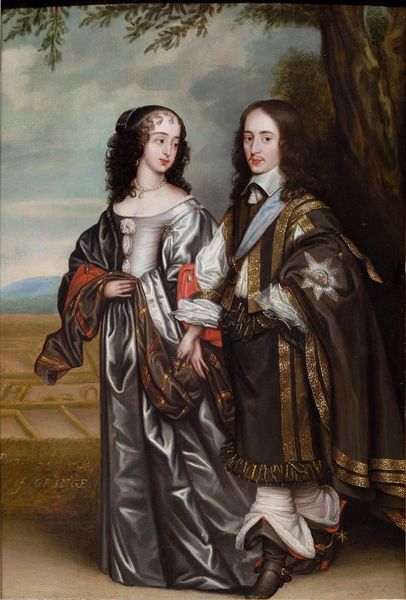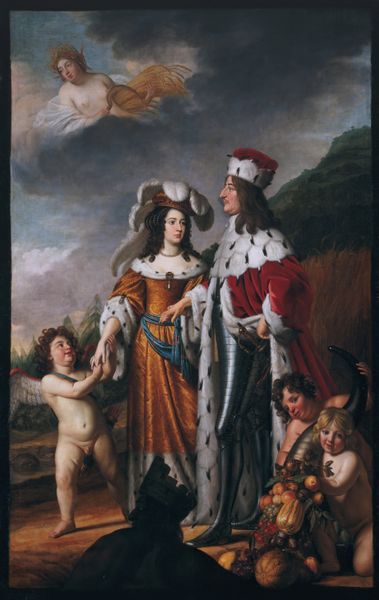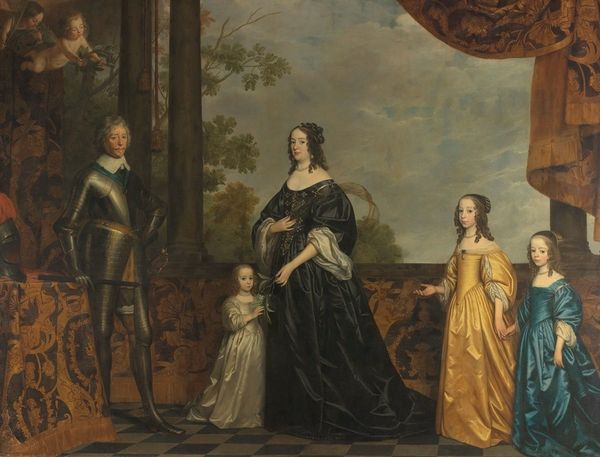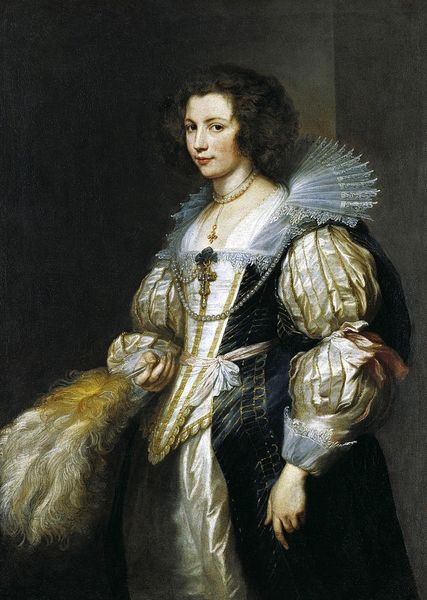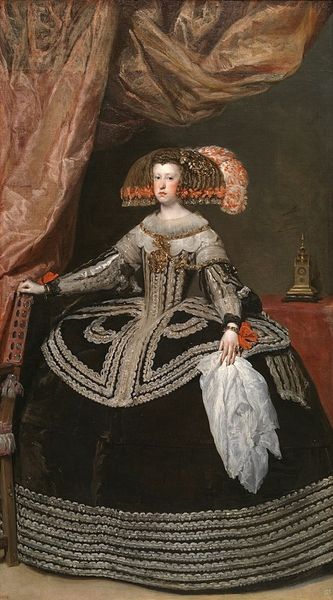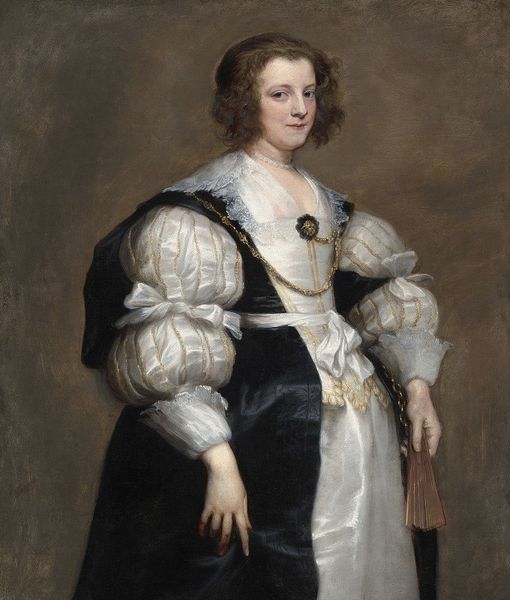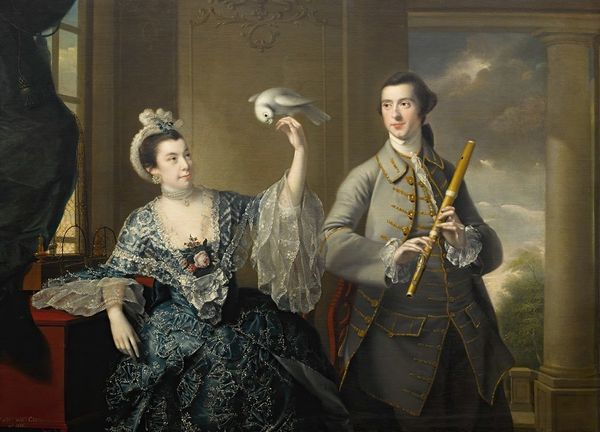
Portrait of Friedrich Wilhelm, Elector of Brandenburg, and his Wife Louise Henriette, Countess of Orange-Nassau 1647
0:00
0:00
painting, oil-paint
#
portrait
#
figurative
#
baroque
#
painting
#
oil-paint
#
genre-painting
#
history-painting
Copyright: Public Domain: Artvee
Editor: Here we have Gerard van Honthorst’s "Portrait of Friedrich Wilhelm, Elector of Brandenburg, and his Wife Louise Henriette, Countess of Orange-Nassau," painted in 1647 using oil. It's striking how deliberately staged it feels, like a presentation of power and dynastic hope with the putti overhead… What do you see in this piece? Curator: Ah, yes, a fascinating tableau brimming with coded messages! Those putti hovering above, for example, aren't merely decorative; they carry the crown of Brandenburg. They symbolize divine blessing upon this union and the continuation of their line, embodying the hopes invested in Friedrich Wilhelm and Louise Henriette. What about the setting itself? Editor: I notice the checkered floor and heavy drapery. They feel very performative, almost like a theatre stage. Curator: Precisely. The architectural backdrop and those luxurious textiles elevate them beyond simple portraiture, emphasizing their status and the grandeur of their court. Even their garments speak volumes. Look at the textures, the colors - everything is designed to convey authority and wealth. This isn’t just a picture; it’s a carefully constructed representation of identity and legacy. How do you interpret the contrasting postures of the couple? Editor: Well, Friedrich Wilhelm looks self-assured and dominant with his hand on his hip, whereas Louise Henriette appears more reserved, perhaps embodying feminine virtues of the time. Curator: Indeed. These are visual cues reflective of societal expectations. He is presented as the ruler, she as the virtuous consort, both playing their assigned roles in the theatre of power. Symbols woven deeply within cultural narratives of that time. Editor: This has truly changed the way I look at the artwork. It's not just a pretty picture; it's a complex web of symbols. Curator: Absolutely! The painting serves as a potent reminder that images are rarely just what they seem.
Comments
No comments
Be the first to comment and join the conversation on the ultimate creative platform.
